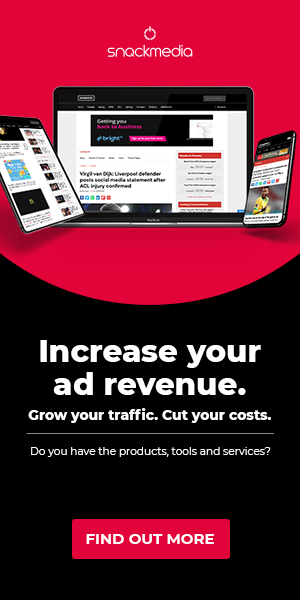The Unseen Social Data Behind The Premier League
The relationship between football and social media is becoming more relevant every day. Recently Real Madrid’s and Barcelona’s Twitter and Facebook social accounts grew to over 192 million followers – more than triple Spain’s current population.
Saying that, football teams have been relatively late to the social party.
Just three years ago, many big football clubs weren’t even on Twitter or Facebook – Manchester United, for example, only joined Twitter in July 2013 (they now have 4.25 million followers – the same amount as their sponsors, Nike).
But despite their delayed jump on-board the social bandwagon, football’s impact on the social sphere has been undeniably dominant. Six of the top eight most Tweeted about events of 2014 were football related.
Football and social media fit together in perfect harmony – passionate football fans take to the real-time microblogging networks instantly.
It quenches their desire for instant news, custom information and need to voice their very many opinions.

The popularity of clubs on social
The sheer quantity of football fans on social generate an abundance of social data about the sport.
I’ve spent the last two months collecting data, using Brandwatch Analytics, to reveal some never-seen-before social insights into the footballing world.

I started my research in the hope to find an answer to one clear question ‘Which club is talked about most?’
This graph charts the amount of mentions each Premier League club receives on social media. Interestingly, I found total mentions differs from many clubs’ actual league position (correct of March 1st 2015).

Obviously this takes into account how some clubs generate mentions online for things unrelated to league position.
Managers being sacked (Aston Villa), European competitions (Everton) and club scandals (Pearson at Leicester City) all made a big impact.
But it also shows clearly how some clubs have larger online followings than others. Liverpool sit in second place in our social rank despite currently sitting fifth in the Premier League, whereas Manchester City, the current runners-up in the Premier League, sit in ninth place in our Premier League social rank.

This chart breaks down the total amount of positive and negative mentions made about each Premier League club over the last two months.
Unsurprisingly to many, Chelsea have generated the highest amount of negative mentions – 66,005 in total.
These mentions are dominated by a plethora of news articles about alleged racism from fans on multiple occasions, and their negative topic cloud reflects this.

Yet, when we look at the percentage of negative mentions compare to positive mentions we find that Chelsea are not receiving the highest proportion of negative mentions – in fact they’re not even in the top five.

Hull City generate the highest percentage of negative mentions, their struggle to keep out of the relegation places combined with their fine for breaching FFP rules being the cause.
The monetary value of a club’s social presence
Clubs are constantly looking to minimise unnecessary expenditure and maximise revenue to get in line with FFP rulings.
Stadium expansions at Tottenham, Liverpool, Man City and West Ham are clear examples of this – Chelsea FC’s ‘buy young, loan and sell’ policy is another.
However, very few clubs (if any) attribute monetary value to the social media presence they have online.
Brandwatch has shown how much exposure each club gets, allowing me to estimate how much that exposure is actually worth.
Using estimates garnered from Tempro’s social ROI calculator, we valued the average amount a low value mention (a retweet or @mention) is worth at £0.288.
I’ve also valued medium value mentions from influencers (Twitter users with 1,000 – 100,000 followers) at a higher cost of £0.432.
Finally, I have calculated high value mentions from Twitter superstars (Twitter users with 100,000 or more followers) at an even higher price – £1.543.
This allows us to put a price on how much each club’s mentions are worth.

The above table shows how social presence is clearly more than an intangible add-on for football clubs. Instead, they are valuable channels for brands to promote their club around the world.
Although these values may seem small for some of the world’s largest clubs (Cesc Fabregas’ annual salary is £10,400,000, five times more than their annual forecasted social value) they represent a funnel of valuable, yet free, promotion for clubs.
This clearly reinforces the undeniable need for clubs to not only have a social presence, but to invest heavily in a social team, CRM platform and social listening tool – after all, the value social generates would easily out weigh the costs.
To give context, Chelsea received £100,000 for their League Cup final win over Tottenham. Their social presence is worth over 20 times more than the prize money.
Moreover, if Liverpool were to go on and win the FA Cup they would make £1,800,000 in prize money – only £590,000 more than the value created via their social presence.
Football around the globe
Global interest in football dwarfs other sports. The 2010 World Cup generated more searches online than the Tour de France, Olympics and Super Bowl combined.
Clubs are very keen to take advantage of this. Pre-season (also mid- and post-season) tours are taking clubs to more and more countries in an attempt to capture a slice of the global pie.
I’ve taken every mention posted about these clubs over the last two months and worked out where in the world they’ve come from. This allowed me to see which clubs were talked about most in each country.
Here are the results.
Most mentioned clubs by country
Most mentioned clubs by European country
Although Chelsea lead the way in terms of social mentions due to high volumes of mentions from the UK and USA, they lag behind in terms of global presence.
Manchester United are the most frequently mentioned club in 51 countries, Chelsea lead chatter in just 40. That still puts them firmly ahead of the rest however:
- Manchester United: 51
- Chelsea: 40
- Arsenal: 36
- Manchester City: 13
- Tottenham: 12
- Liverpool: 11
- Everton: 3
- West Ham: 3
- Southampton: 2
- Newcastle: 2
- West Brom: 1
Manchester United’s dominance over the global football stage is somewhat surprising considering their poor performances over the last two years and their late adoption of Twitter.
Nevertheless, their powerful rule over English football since the incarnation of the Premier League has cemented their place as global leaders on social.
For years, clubs have been trying turn the American public from players to fans (soccer is the most played sport in the United States but only the fifth most watched). America’s performance at the 2014 World Cup combined with the influx of former English Internationals has started to catch the eyes of viewers.
This is echoed in the social data we collected. Americans have Tweeted about English clubs 600,000 times in the last seven days.
Below we can see which clubs are talked about most in each state.
The team leading the social chatter in the USA is Chelsea with 29 states talking predominately about the blues.
They are followed by Manchester United with eight states, Tottenham with seven, Arsenal with four and the current Premier League champions Manchester City – most talked about in three states.
Tottenham’s social presence in the states is particularly impressive. In fact, they were the second most mentioned club, ahead of global giants Manchester United and Arsenal.
Spurs’ recent 2014 tour of America and Canada, combined with their media work with NBC, has undoubtedly started to pay off.
The importance of social media in football will only continue to grow in future years.
As year-on-year revenues grow for the world’s top clubs and social networks user numbers leave the millions and enter the billions, you can guarantee clubs will invest more and more time and money into each platform.
As for now, I hope you find this article a useful reference showing the current landscape for English football clubs, whilst also bringing some unique insights.
Note: All of the data presented in this article was collected by Brandwatch Analytics – a world leading social listening tool.
Find out more about the world’s leading social intelligence platform by arranging a demo.
About author
You might also like
Mallory Group Launches White Paper on the ‘New Normal’ for Sports Rights Holders
Sport is proving to be one of the high-profile business casualties of the Covid-19 pandemic. However, its slow and structured return will be a key factor in life entering the
The seven essentials for achieving successful sports branding
By Daniela McVicker When it comes to sports, great branding is a must. Your brand influences how people see your company or team. It helps you to forge connections with
Live Chat: A New Social Experience in Sports
Article written by John S. Kim, CEO and co-founder of global API company SendBird Social media rose to prominence throughout the world due to its potential for connection. Social channels provided the








